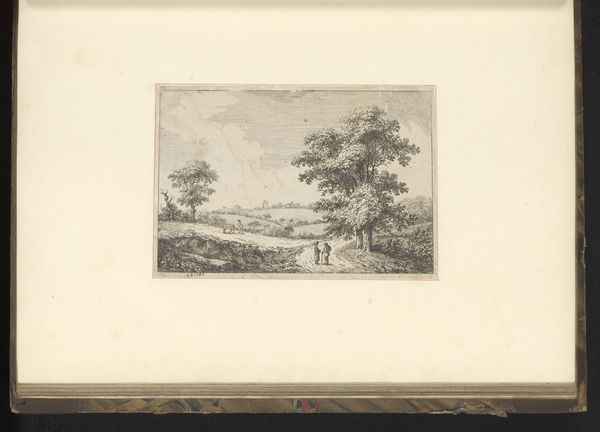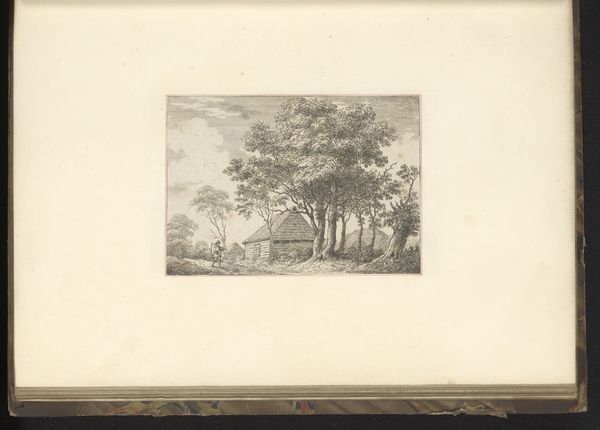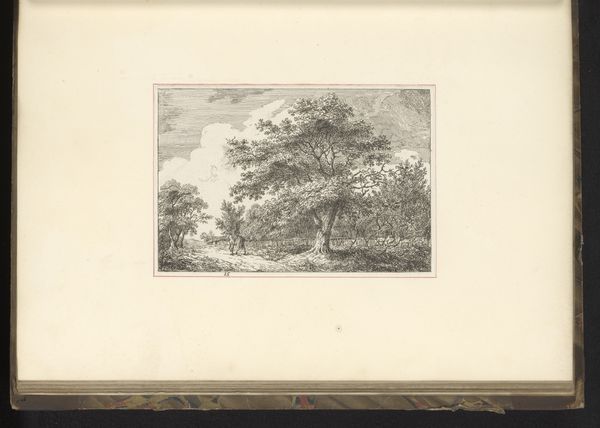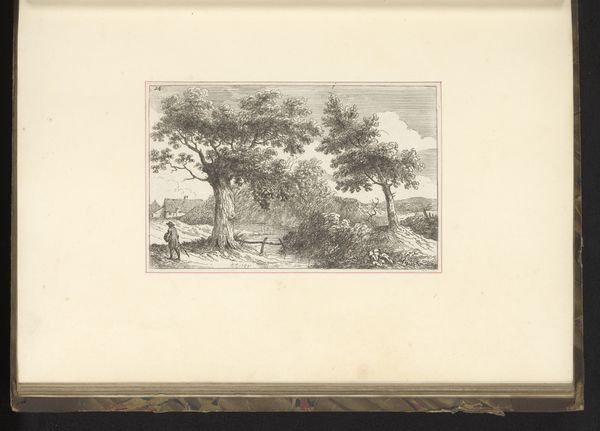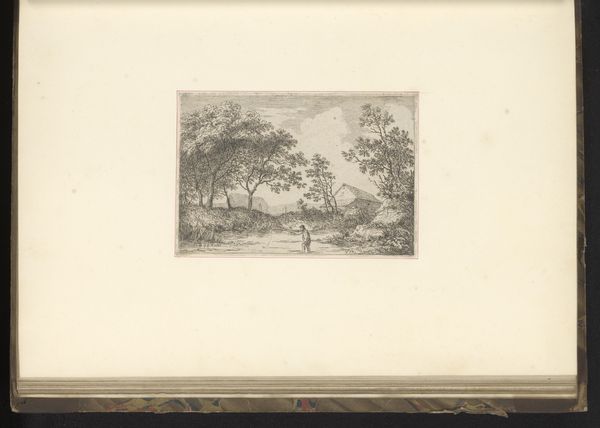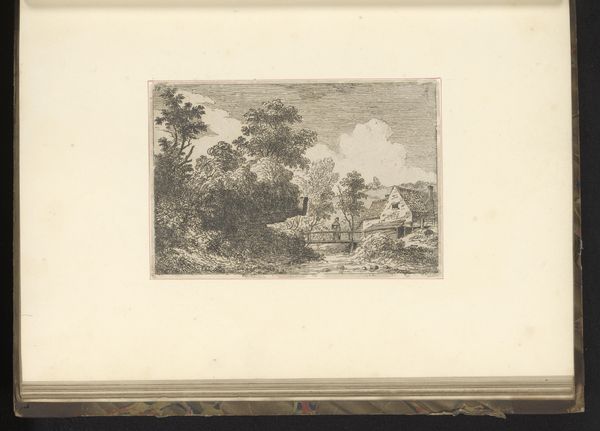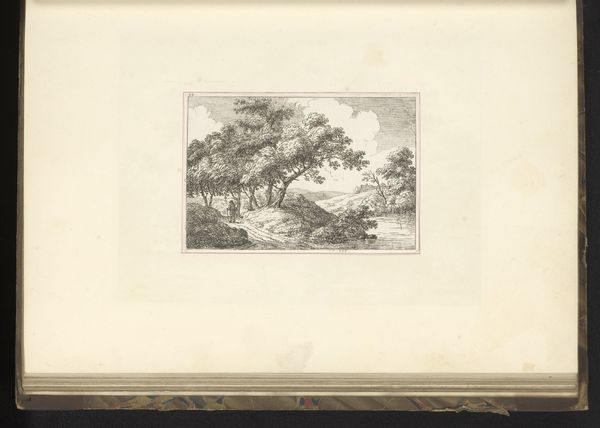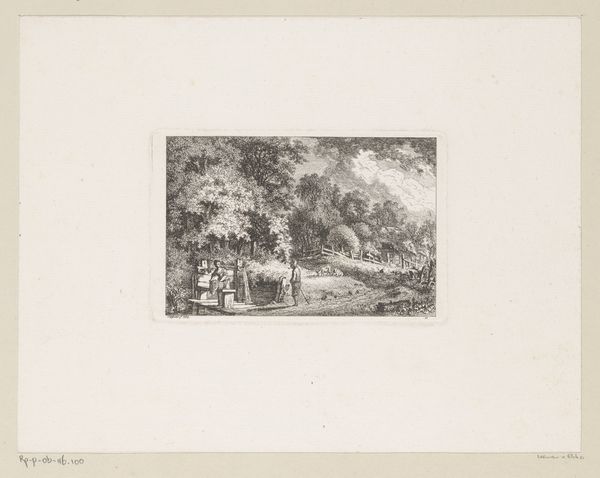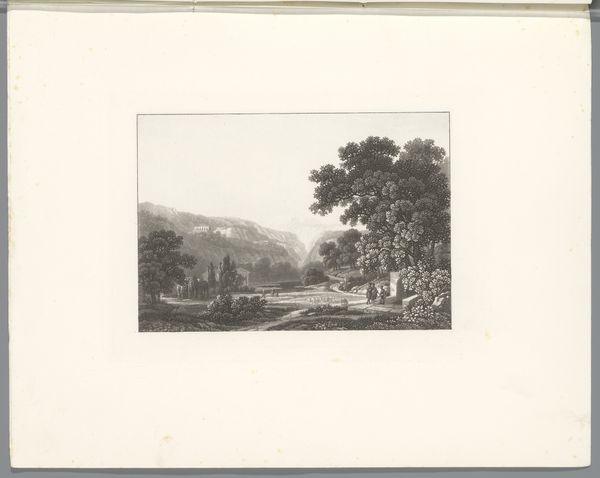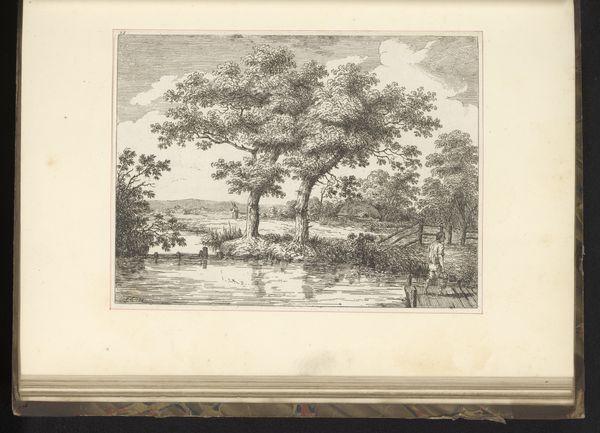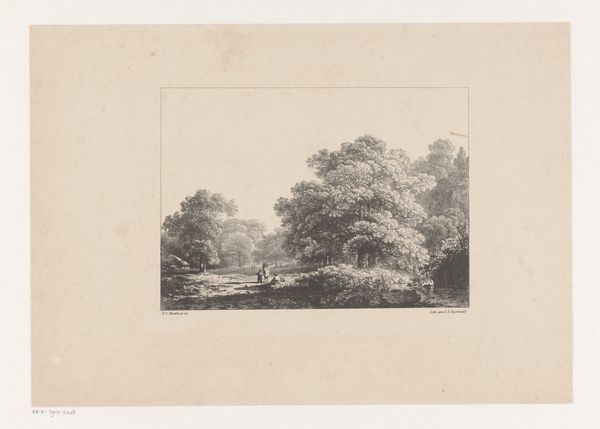
#
photo of handprinted image
#
aged paper
#
toned paper
#
ink paper printed
#
unrealistic statue
#
carved into stone
#
carved
#
watercolour illustration
#
pencil art
#
watercolor
Dimensions: height 121 mm, width 174 mm
Copyright: Rijks Museum: Open Domain
Editor: So, this is “Landschap met reizigers met een ezel,” a landscape by Edward Edwards, probably made somewhere between 1748 and 1806. It’s an ink and paper print. There’s something peaceful and almost… classical about it, with the travellers and distant architecture. What strikes you most when you look at this piece? Curator: What interests me is how this idyllic scene might be masking deeper socio-political realities of the time. How do we interpret these figures moving through the landscape? Are they simply travellers, or do they represent something more – perhaps economic disparity or the rise of a merchant class finding its place in the world? Editor: I hadn’t thought about that at all. It just seemed like a nice picture! But now that you mention it, they do seem a little… anonymous. Curator: Exactly! Consider the tradition of the picturesque in British art. How much of that is aesthetic escapism, and how much is it actively ignoring the societal inequalities that were becoming ever more visible during that period? What about the "common lands" that were being enclosed at that time, restricting movement? Editor: So the beauty might be a way of covering up less pleasant things? Curator: Potentially, yes. Or perhaps it reflects the complicated, conflicting emotions of a society undergoing immense change. Can we see those contradictions within the composition? The strong diagonals of the path drawing the eye into the distance. Editor: It does create a push and pull. I see what you mean now. I'm going to look at these landscapes much differently moving forward! Curator: Precisely, by engaging with art from different points of view we may start challenging established interpretations and creating our own.
Comments
No comments
Be the first to comment and join the conversation on the ultimate creative platform.
